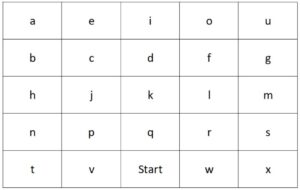10 Free Spelling Activities
Are you trying to find a way out of the chaos that is spelling? Check out Scholar Within’s spelling course. Spelling patterns are the basis of our methodical, step-by-step video courses and interactive exercises. Spelling exercises can help with spelling difficulties and add some fun to spelling practice. Issues with auditory and visual processing may lead to spelling errors.
These fields influence how you think of vocabulary from reading, phonics, and spelling.
1. Spelling exercise in the mind’s eye
- Place your hands in front of your eyes like a camera. Take a look at your spelling word and then use your eyes to capture an image of it. Shut your eyes and visualize your word in your thoughts. Envision the word exactly as it appears in your thoughts. Give it a proper spelling. Verify that you got it correct.
- Write your spelling word in the air.
- Put your signature on a piece of paper.
This activity specifically enhances your visual and tactile-kinesthetic memory abilities.
2. Post your spelling phrases
- Post your child’s spelling list on the bathroom mirror and next to their bed so they may see it regularly during the week. Have your children read their words every time they use the restroom, as well as before you go to bed and when you wake up in the morning.
3. Sort your spelling words according to color.
- Ask your kids to write all of the vowels in your words in red and all of the consonants in blue. This will assist you in recalling your spelling terms. Color coding has a 25% improvement in memory.
4. Check street signs for your spelling words.
- Look for the letters in order in a news article, magazine, or on street signs if you can’t see the entire word. If my word was “bike,” for instance, start by looking for the letter “b,” then move on to the letters “i,” “k,” and “e.”
5. Make your spelling words with ABC pasta noodles.
- Alphabet pasta is frequently available at your neighborhood grocery store. Yes, you may locate the letters in your words while enjoying a homemade soup. However, you can arrange them on colorful construction paper before they cook. They can even be adhered to a piece of paper using adhesive. Just avoid using the attached bits in soup!
6. Find your spelling terms in a magazine or newspaper.
- If the word isn’t visible in its whole, try searching for the letters in a paragraph or advertisement. The letters should be cut out and adhered to a piece of paper. If my term were “bike,” for instance, you would find and remove the first /b/, then the first /i/, the second /k/, and the last /e/ from a sentence or paragraph. Arrange the letters alphabetically on a piece of paper.
7. Leaping with the words on your spelling list
- Using chalk, create a 5 x 5 grid on the sidewalk. Every letter should go in a square. One additional square will be available in the bottom center row.
- Jump over to the initial letter of your word after tossing a bean bag there. Once you have completed spelling the word, toss the bean bag to the following letter in the word, and so on. After you have spelled every word, make sure to pronounce it out loud.
- Proceed to the next letter in each word, spelling the word out in its entirety. For each word after that, start over from the beginning and repeat the process.
8. Spell out your words as you bounce a ball.
- To accomplish this, bounce a ball against a wall once for every letter in the word, or bounce it on the floor once for every letter in the word. While you are bouncing the ball, say each letter.
9. Create a drawing in which your spelling words are hidden.
- Remember to remove the crayons or colored pencils! Check to see if anyone else can identify the words in your image.
10. With your family, create an Add-On-Story using every word from your spelling list.
- An Add-On-Story is a narrative in which the first person sets the scene and the following person tells the rest of the story. The narrative can continue until every spelling term has been used.
Here’s a sample narrative to get you started:
The night was stormy and dark. We heard thunder roaring and saw streaks of lightning. Suddenly, we were enveloped in darkness. What took place next?
11. Additional Spelling Exercises
Practice makes perfect, much like in sports and learning a new ability. What other practical spelling exercises are there?
- Word search
Word searches are a favorite among students! This is a fast method to learn spelling words and enhance your visual processing abilities. These aid pupils in swiftly recognizing words amidst a sea of letters.
- Magnetic letters
The ideal spelling exercise to do hands-on is using magnetic letters. There are letters that have red vowels and blue consonants. This facilitates pupils’ ability to visualize the word when they spell it on their list.
- Practice spelling test
Give your children a practice spelling exam the day before the actual test. They can use this to see which words they need assistance with.
- Flashcards
Learning sight words is made much easier with the aid of flashcards. On the sight word cards, you can also include illustrations and utilize color to aid.
- Matching memory games
Another excellent method for learning sight words is concentration, commonly referred to as memory. Now is the time to lay all of the cards face down and try to locate a match by flipping two cards at a time. You put the cards back face down if you don’t discover a match; otherwise, you retain them.


